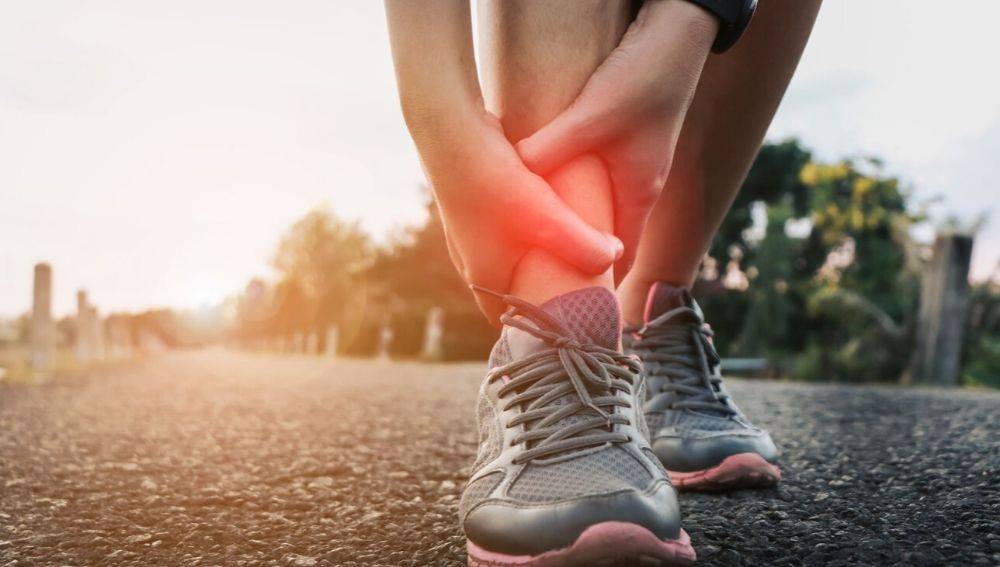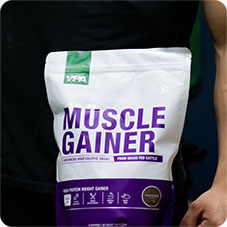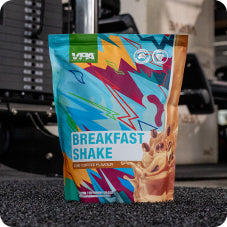Your Cart is Empty
What You Need To Know About Food Cravings
June 05, 2019 5 min read

Food cravings are very common, particularly in Winter. Whether it is a craving for specific food types, like chocolate, foods high in sugar or carbohydrates, cravings seem to constantly get in the way when it comes to staying on track with exercise, nutrition and weight loss.
There seems to be a connection between food and mood and a frequently proposed theory is that a lot of people eat (carbohydrates) to elevate mood. This occurs through increases in a neurotransmitter in the brain called serotonin. Serotonin is known to have a positive effect on mood.
Chocolate is the food most typically associated with reports of food cravings. Chocolate cravings are endorsed by 40% of women and 15% of men and although many chocolate cravers report and overall preference for sweet foods, most report that other foods will not suffice to satisfy a craving for chocolate. While all food promotes a reward response in the brain in a negative energy balance as a means of encouraging eating, high sugary foods have been shown to elicit larger amounts of pleasure and reward neurotransmitter dopamine which plays a role in habit formation.
A blood sugar dip due to many hours between eating or in response to high simple carbohydrate intake can make your body scream for something sugary! Emotions can also cause a sense of ‘need’ for non-nutritious foods.
How do we beat these cravings?
1. Eating regularly (every 2 hours) is key to avoiding a dip in blood sugar levels and in turn having cravings for food with little to no nutritional value.
If you've ever had a sugar crash, you know how bad it can be. Your energy level plummets, your mood crashes and you feel like you're going to pass out. You may even get headaches or other symptoms of low blood sugar, such as nausea or dizziness.
Sugar crashes are common for people who eat too much sugar or carbohydrates in one sitting — especially those who don't eat regularly throughout the day. Eating regularly (every 2 hours) is key to avoiding a dip in blood sugar levels and in turn having cravings for food with little to no nutritional value.
When we don't eat enough carbs at one time, our bodies start converting fat into glucose to fuel our brains and bodies. That's why it's important to eat every 2 hours if possible — not only does this help prevent sugar crashes but also keeps our energy levels up throughout the day!
Luckily there are ways to prevent sugar crashes from happening:
- Eat small meals every 2 hours or so instead of big ones
- Eat foods that contain protein and fat along with carbohydrates — this slows down digestion so the sugars won't spike your blood sugar levels as quickly
- Drink lots of water throughout the day — water helps keep your metabolism going and prevents dehydration.
2. Eating smaller meals more often will stop you going into starvation mode which causes a change in neurotransmitters and hormones
The most common signal is hunger. If you ignore hunger and try to keep on with your normal eating pattern then your body will eventually start to use calories from fat stores as a way of keeping going.
This process is known as “starvation mode”, where your metabolism slows down dramatically in order to preserve energy levels. This can make it harder for you to lose weight and can even lead to weight gain if you are not careful!
Eating smaller meals more often will stop you going into starvation mode which causes a change in neurotransmitters and hormones. This means that instead of using up stored energy from fat stores, your body uses up any excess calories from carbohydrates that are available in your diet at that time.
It also increases insulin sensitivity which means that more glucose gets taken up by muscle cells rather than being stored as fat by fat cells. This means that less glucose remains in the blood stream for longer periods of time which makes it easier for people who suffer from diabetes type 2 because there are fewer fluctuations in blood sugar levels during the day.
3. Prioritise nutrient-rich foods like nuts or substitute your chocolate fix for a sugar free chocolate protein bar.
Nutrient-rich foods like nuts, seeds, and avocados are an excellent way to satisfy your sweet tooth without the sugar. If you’re craving chocolate, try a sugar free chocolate protein bar. Not only will it satisfy your craving for chocolate but it will help you maintain lean muscle mass and burn fat.
Sugar-free ice cream is another option for when you’re feeling like treating yourself. Just make sure that there isn’t any added sugar in the ingredients list!
4. Enforcing regular meals and snacks comprising of complex carbohydrate and protein will help to stabilise blood sugar levels.
Enforcing regular meals and snacks comprising of complex carbohydrate and protein will help to stabilise blood sugar levels. Complex carbohydrates include wholemeal breads and cereals, oats and brown rice. These foods release energy slowly into the bloodstream, helping to prevent spikes in blood glucose levels after meals. Protein helps to balance these carbohydrates by slowing down their absorption rate.
5. Retrain your brain by having a period of abstinence from sugar and simple carbohydrates. Break the circuit!
Your brain is a highly developed organ that requires fuel to function properly. But if you're like most people, the fuel you're putting into your body isn't exactly brain food. Sugar and simple carbohydrates are essentially empty calories that provide a quick burst of energy, but they do nothing to satisfy your brain's long-term needs. As a result, you feel hungry again soon after eating these foods.
The result is that many people find themselves consuming more than they need just to satisfy their cravings for sugar and simple carbs. And the cycle continues until we develop insulin resistance and type 2 diabetes — or worse yet, prediabetes.
One way to break this cycle is by retraining your brain so it no longer craves sugar and simple carbs when you're hungry. A good way to do this is by following a period of abstinence from sugar and simple carbohydrates (I recommend at least two weeks) followed by a few days where you reintroduce these foods slowly into your diet in small amounts only once per week or so (see below).
In addition to helping break the sugar addiction cycle, abstaining from these foods will give your digestive system time to heal any damage done by years of overconsumption of these foods.
6. Plan your meals for the week so that you have nutritious meals and snacks on hand.
Planning your meals for the week is one of the best ways to make sure you're eating healthy. If you don't have a plan, it's easy to fall back on take-out or fast food and end up eating too much junk food.
When you plan your meals and snacks, you can make sure that each meal includes nutritious foods like fruits, vegetables, lean proteins and whole grains.
You don't have to spend all day planning meals — just a few minutes each week will help ensure that you're eating healthy
Having a well balanced diet including protein, complex carbohydrates, vegetables and grains will keep you feeling fuller for longer. Snacking on foods like nuts and berries will also provide other nutrient rich alternatives to chocolate and sugary foods. Balance is all about eating well, but also being able to treat yourself without binging.
References for Food Cravings:
- Nutr. March 1, 2003, vol.133 no 3 835S-837S
- Women health & fitness, December 2015, vol.21 no.12
Also in Diet and Nutrition

Best Supplements for Injury Recovery (And Nutrition Tips to Heal Faster)
May 21, 2025 6 min read
Read More Recent Articles
- Best Supplements for Injury Recovery (And Nutrition Tips to Heal Faster)
- Does Whey Protein Have Lactose? What You Need to Know
- Protein Shake for Breakfast: Is It a Healthy Choice?
- How to Bulk: A Complete Guide for Beginners
- 10 Quick Pre-workout Bites to Power Your Training
- Banish the Belly Bloat: Simple Solutions for a Flatter Feeling
- Navigating the Golden Years: Enhancing Mobility as You Age
- A Comprehensive Dive into the World of Biohacking
- Why you should try the Mediterranean Diet
- Managing Blood Sugar Spikes: A Comprehensive Guide for Better Health
${{amount}}















